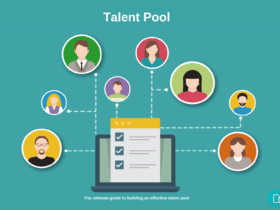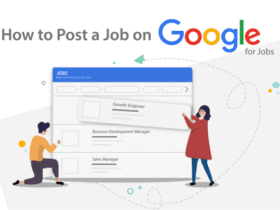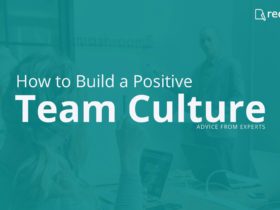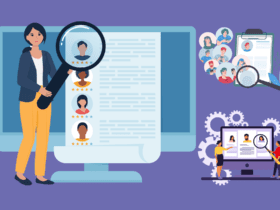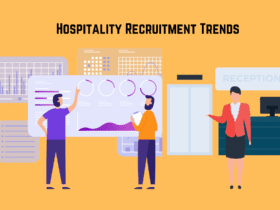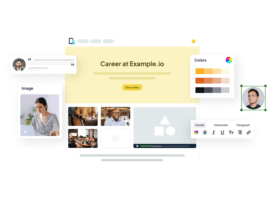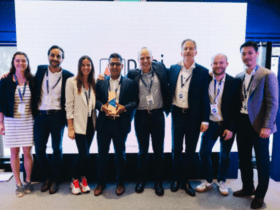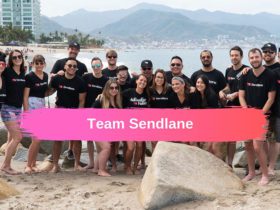

36% of employers do not provide a structured new employee onboarding process.
Results?
- lower productivity
- greater inefficiencies,
- higher employee turnover,
- lower employee morale
- lower level of employee engagement
To keep up employee onboarding is the foremost important step in the employee journey. The best way to build a foundation relationship with a new employee. As it said. “first impression is the last”–-employees draw an image of the workplace in the beginning days and carry it with them.
That’s why it is very important to put up an effortless onboarding process to achieve job satisfaction, performance booster, and retention activities in place. In this blog, we’ll help you define a fantastic onboarding process that ensures no employee enthusiast or interest leakage, peak productivity, and utmost employee engagement.
But first, let’s clear the basics.
What is employee onboarding?
The employee onboarding process is a step-by-step procedure to hire new candidates in the organization. In a way that makes the hire fan of your organization. To understand, employee onboarding includes orientation, passing work culture values, and introducing principles and goals.
New hires generally show dependency by holding hands till they’re ready to hunch responsibilities on their shoulders to deliver results. As initially, they need to be familiar with the organization’s culture and expectations. Onboarding helps new hires to adjust to the new environment and become productive quickly. It also helps to create a positive work environment. Hand-holding practices include
- Understanding organization gadgets and other resource libraries
- To acquaint themselves with attendance & leave policies
- Every organization has different time off regulations– adapting how to record their work hours or how to calculate flexible work hour system.
- Team introduction, and lunches
The most effective way to onboard a new employee is to treat them like a special guest in your organization. You should guide them through the onboarding process with enthusiasm and not forget to be patient. New hires can sometimes find it challenging to adjust because they come from different backgrounds and are entering a new world shaped by the organization’s values and ideas.
The Goldmine lies at employee onboarding
Gone are the days of traditional onboarding methods. In this modern era, adapting to new strategies and technologies is vital to enhance the onboarding experience. It is very important to focus on L&D of the new employee, rather than prejudice on new employee’s past experiences.
As HR tech leader Johnny Campbell said in a recent discussion,” Experience does not equal skill by default. It’s a dangerous proxy to use as verbatim. Also the skill can be acquired in a non-traditional way that current screening processes often miss or overlook
Many employers confuse and mix onboarding with hiring. Hiring is the process of recruiting and selecting a candidate for a job role. You scrutinize the sea of resumes and give a golden ticket to join your organization to only few of them.
Whereas, onboarding is something where the trust-building of a hired employee begins. It’s that part where you staple the newly hired employee into the company and its culture. You teach them that secret handshake that–Mike was being taught in Suits. (because, you know, every workplace has one of those). And other activities take place like activities like orientation, training, and providing them with the tools and information they need to succeed in their new role.
Now that you know the importance and definition of employee onboarding, let’s take the downriver and understand it’s five onboarding stages.
Onboarding process checklist
According to research and conventional wisdom, employees have about 90 days to prove themselves in a new job. As soon as new hires feel welcome and prepared for their jobs, they are more likely to be successful in contributing to the firm’s success.
Now, let’s break down the employee onboarding process into five key stages:
1. Before the First Day (Pre-boarding)
Before the first day, and after the candidate signs the offer letter your pre-boarding journey begins. As an employer, send an informative email and a warm welcome video. This email will cover important details like your start time, where to go (or log in if it’s remote), whether to bring lunch, and who to contact if you have questions.
If a candidate is on-site, provide all the info you need to access our network, saving you a trip to IT on your first day. And to make things even more personal, include a video of our company founders or your future team welcoming you. Use tools like Biteable, Vimeo to create videos from free templates.
Send an invite to join your new team for a social event, a great opportunity to start building those crucial connections.
Craft a 30-60-90-day plan that outlines candidates responsibilities and performance expectations. It’s like a roadmap for your success, setting clear goals and metrics for your first few months.
Before candidates join, introduce to your new team, ensuring everyone knows role their and responsibilities. This helps the candidates feel like part of the family right from the beginning.
To make the first day a breeze, create a detailed agenda like:
- Meet your team
- Acknowledge company overview from our management team,
- Take an office space tour,
- Sit down with your direct manager, have a cup of tea or coffee at coffee station. It’s all about setting you up for success.
Tech-wise, keep email address and network access ready, so you can hit the ground running without IT hassles.
Your pre-boarding experience is designed to make new onboarded employee feel welcomed, informed, and ready for your exciting journey.
2. The First Day ( Orientation )
The first day, also known as orientation, is all about creating an unforgettable experience for your new team member. While there’s a lot of information to share, it’s the feeling they leave with that matters most.
Welcome: Ensure a smooth start by having someone ready to welcome them, even if they don’t have an access card yet. Make them feel expected and valued.
Clear Agenda: Provide a clear agenda for the day in advance. This helps set expectations and structure.
Workplace Tour: If they’re on-site, give them a tour, from restrooms to coffee machines. Familiarize them with the workspace.
Meet the Team: Introduce them to colleagues, especially their team members, so they feel part of the group.
Onboarding Buddy: Assign them an onboarding buddy for support and guidance, just like Netflix does.
30-60-90-Day Plan: Later in the day, delve into their 90-day plan, setting expectations and goals.
Welcome Treats: Add a special touch with welcome snacks and drinks. It’s a memorable gesture.
Company Presentation: Large organizations often share a presentation about company values, culture, and goals. Google, for instance, emphasizes its unique values.
Weekly & Monthly Structure: Make sure they understand the routine, including meetings and team lunches.
Calendar Access: Add them to team calendars and provide access to the holiday calendar.
Resource Folder: Grant access to essential resources, including handbooks and contact information.
Practicalities: Address legal and payroll matters promptly.
Profile Picture: Capture a photo for their access card and communication apps.
Training: Offer software training, from communication tools to email and role-specific software.
By the end of the day, your new hire should feel not only informed but also warmly welcomed. These activities typically take 4-6 hours, leaving room for system familiarization, shadowing, or even starting on their first project.
Remember, a well-structured orientation sets the stage for a positive and productive journey ahead.
3. The First Week
During the first week, continue to help new team members settle in and feel at home.
Team Connections: Arrange one-on-one meetings with direct colleagues to deepen their understanding of roles and collaboration.
Manager Feedback: Daily check-ins with the hiring manager occur during this week. It’s a chance to reflect on the week, identify successes, and plan the next steps.
Tools and Systems: Learning our tools and systems is crucial, so dedicate the entire first week to it. Make your team feel confident before diving into tasks.
To-Do’s: Set up regular 30-60-90-day plan check-in meetings to track progress and maintain a clear plan for the next three months.
Company Presence: Enhance company’s online presence by adding the new hire’s profile to our “About Us” page and introducing them on LinkedIn. It’s all about building a closer connection with the community.
By the end of the first week, your new team members are not only familiar with their colleagues and tools but also integrated into the online presence. This sets the stage for a successful journey ahead.
4. The First 90 Days
The first 90 days for any new hire are absolutely pivotal, laying the foundation for their entire journey within the organization.
Guiding Behaviors: Recognize that new team members, despite their expertise, need guidance on aligning their behaviors with the organizational strategy. The situational leadership model aids in determining the right supportive and directive behavior based on individual development.
Structured Plan: The 30-60-90-day plan is guiding light, ensuring employees understand their responsibilities and align with long-term goals.
Proactivity and Autonomy: Encourage proactivity and independence, empowering employees to learn and succeed on their terms while offering support when needed.
SMART Goals: Managers and HR professionals play a vital role in setting SMART 30, 60, and 90-day goals, aligning individual development with long-term organizational objectives.
30-Day Goals: In the first month, it’s about getting acquainted with the organization and role, with goals centered on internal learning and smaller external achievements.
60-Day Goals: The second month delves into more role-specific tasks, understanding organizational fundamentals, and becoming integral team members.
90-Day Goals: This phase focuses on full integration into the team, culture, and role, aligning with long-term performance expectations.
Transition: As the final month approaches, clarify expectations for a smooth transition based on individual integration, independence, and competence levels.
Training Focus: In these crucial 90 days, employee training is paramount, encompassing various methods like instructor-led learning, e-learning, on-the-job training, job shadowing, and mentoring.
Ensure that each new team member not only adapts to their role but also thrives, contributing effectively to collective success.
5. Towards the end of the final year
As we reach the end of the first year, it’s crucial to wrap up the onboarding journey with a final meeting that can also serve as the first annual performance review.
Practical Check-In: Take the opportunity to check in with your employees, understanding how their first year has unfolded.
Performance Assessment: Evaluate their performance against long-term goals to ensure alignment with company objectives.
Future Discussions: Discuss the company’s Learning and Development (L&D) program, exploring their career aspirations and preferences.
Feedback Collection: Follow Google’s lead and collect anonymous feedback to improve the onboarding process. This not only enhances the process but also fosters a culture of openness and value.
Best Practices: Implement employee onboarding best practices such as integrating HR practices effectively, creating streamlined workflows, using onboarding checklists, ensuring consistency, clear communication, embedding organizational culture and values, and continuous evaluation.
Final Note: Employee Onboarding Stories
In conclusion, employee onboarding is a goldmine of opportunities. It not only ensures a smoother transition for new hires but also contributes significantly to an organization’s performance and retention rates. To streamline the onboarding process, consider exploring platform like Recooty, which offer innovative solutions to enhance the onboarding experience.
Here’s a final word from a Reddit user who shared their successful onboarding strategy:
“We implemented an employee welcome kit with company swag that has been successful. Also prebooking 30 and 90-day check-ins with the new hires to see how things are going and gathering feedback about what’s going well, what isn’t, and how the HR team can improve the process in the future is helpful. Helps the employee feel cared about and we’ve solicited important feedback for both managers and the team.”
Beyond HR onboarding, it’s crucial to recognize that managers play a pivotal role in guiding employees through their first few months. Providing onboarding checklists, coaching, and helping them map out their progress in a 30-60-90-day plan can make a significant difference.
In a wrap up, the journey of employee onboarding is evolving, and organizations must adapt to these changes to ensure the success of their new hires and the overall success of the business.
Frequently Asked Questions
What are the 4 C’s of employee onboarding?
The 4 C’s of employee onboarding are Compliance, Clarification, Culture, and Connection. These elements ensure that new employees are compliant with company policies, have a clear understanding of their roles, are immersed in the organization’s culture, and establish connections with their colleagues.
How do you build an employee onboarding?
To build an effective employee onboarding process, you should follow the five key stages mentioned in this guide: Pre-boarding, Orientation, First Week, First 90 Days, and End of the First Year. Customize each stage to suit your organization’s culture and requirements.
What are the 3 most important elements of successful onboarding?
The three most important elements of successful onboarding are clear communication, structured training, and ongoing support. Effective communication ensures that new hires understand their roles and responsibilities, structured training equips them with the necessary skills, and ongoing support helps them integrate into the organization smoothly.
What are the primary phases of employee onboarding?
The primary phases of employee onboarding, as outlined in this guide, are Pre-boarding, Orientation (First Day), First Week, First 90 Days, and End of the First Year.
What is the onboarding process in HR?
The onboarding process in HR is a systematic approach to integrating new employees into an organization. It includes activities such as paperwork, training, orientation, and ongoing support to help new hires become productive and engaged members of the team.


